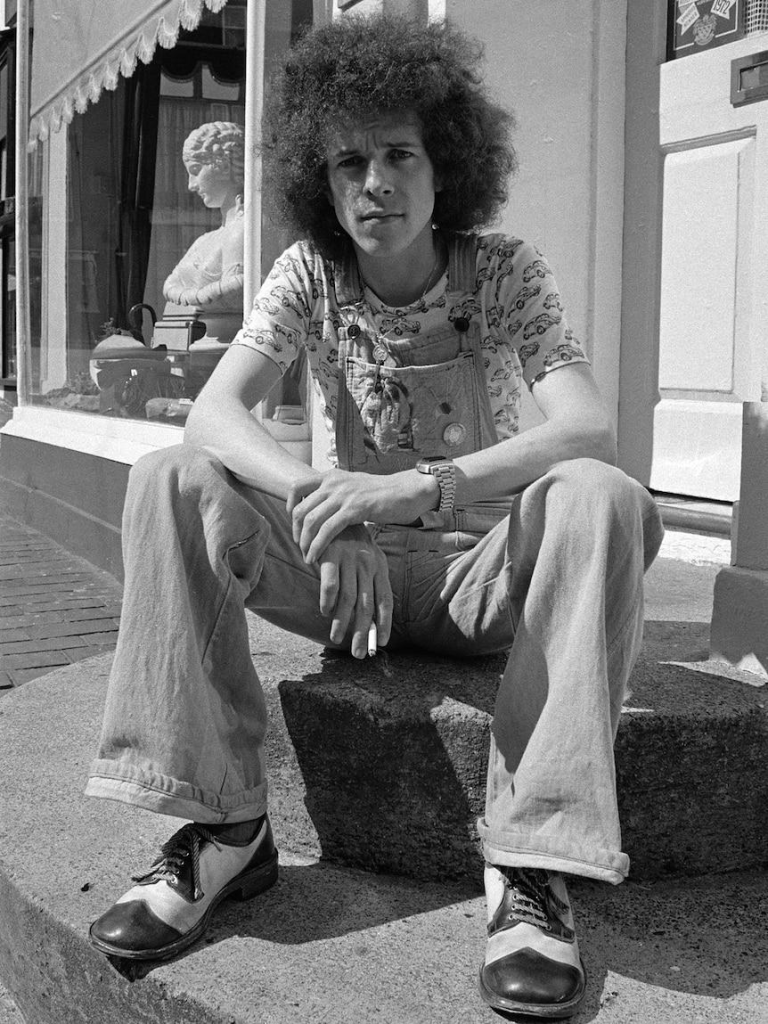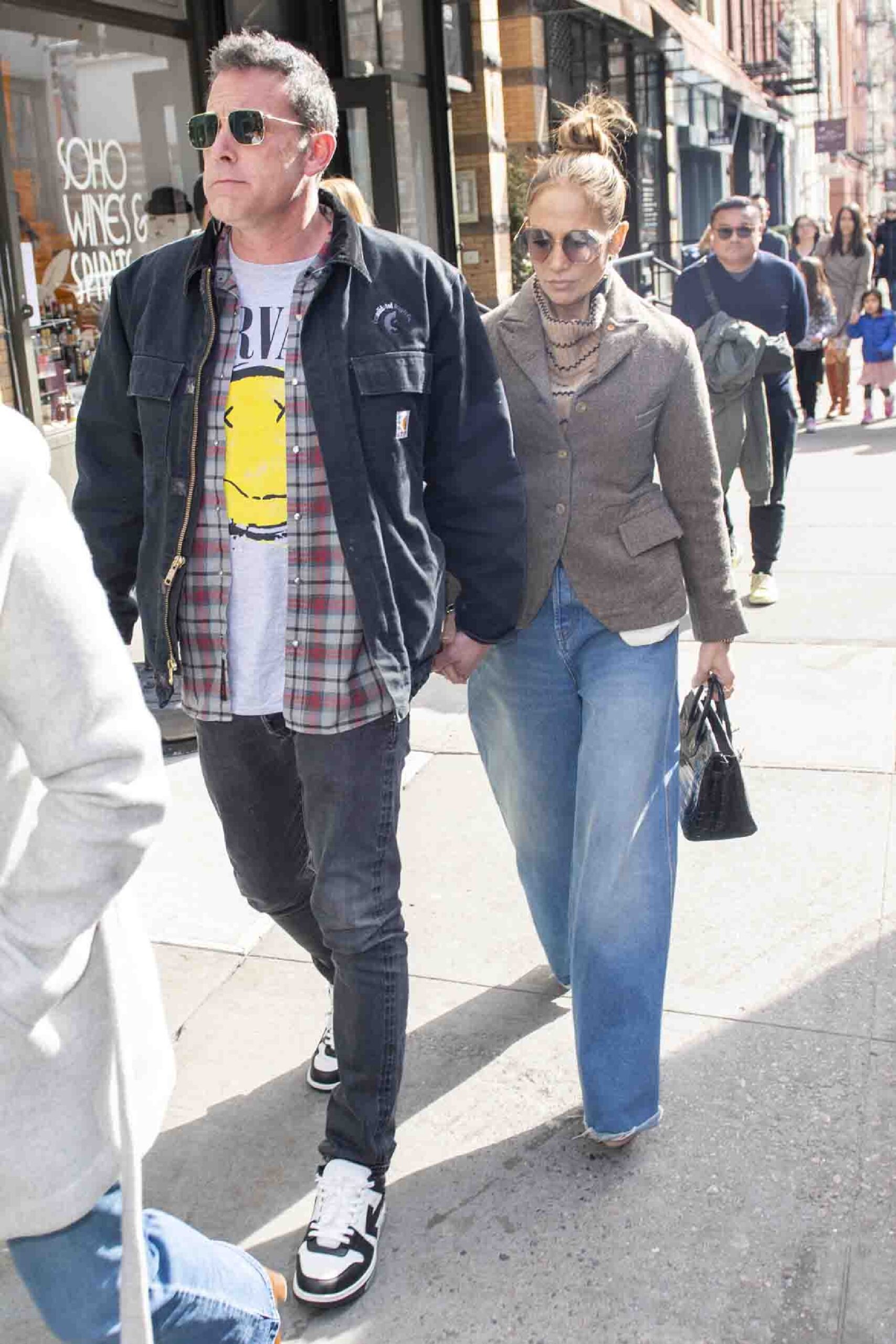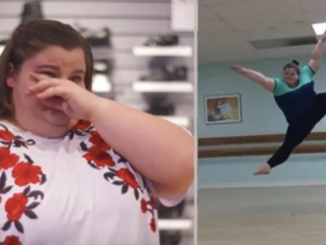“I look at my role as being a friend of Canberra Hospital, I can bring some pleasure and happiness sometimes to people who are really in difficult times in their lives.”
With backing music from a Bluetooth speaker, Sayer croons his way around the cancer wards, making a human connection with everyone he comes across.

Canberra Region Cancer Centre Operations Manager Caroline McIntyre says Sayer’s visits are typically kept a surprise for patients and staff.
“He’s always come in so discreetly,” she says.
“Normally it’s just very quiet, he comes up in the back lift and says hello to literally everybody.
“Some of them are doing it tough, and to have a little bit of joy and light – it really gives them a lift.
“What makes me happy is to see people getting chemo on their feet dancing.”
Jamming with Jimi Hendrix, Countdown and the Troubadour
Originally a graphic designer by trade, English-born Leo Sayer rose to pop prominence in London in the late 1960s, as a singer-songwriter – and was soon adopted by Australia as an honorary son after his first tour here in 1974.
He went on to become an Australian citizen in 2009.
Sayer was a regular on ABC TV’s Countdown during the 70s and 80s, performing chart-toppers like “You Make Me Feel Like Dancing”, “When I Need You”, “More Than I Could Say” and “Orchard Road”.

He blushingly admits they were wild days – when he didn’t always live up to his “good-guy” public persona.
“It was mad, I mean, Top of the Pops in England, Countdown over here,” he says.
“You were mobbed by the fans, I remember being dragged out of a limousine the first tour that I came here, and then speaking to crazy people like Molly Meldrum on TV and trying to sort of like take it all in.”
It seems hard to believe – the petite, well-spoken singer, with a mane of curly hair that inspired changing his name from Gerard to Leo – beating off mobs of screaming fangirls.
Sayer circulated in superstar company, becoming close friends with former Beatles George Harrison and Paul McCartney, collaborating with Roger Daltrey of The Who, and even sharing a sly cigarette or two with John Lennon and Yoko Ono who had a flat above his design studio.
“I met Jimi Hendrix right at the start of his career. I actually jammed with him, playing the harmonica, and him playing the guitar,” he says.
Recalling his 1975 opening night at the famous Troubadour Club in Los Angeles, he looked up to see an intimidating line-up of fans in the front row.

“It was David Bowie, Elton John, and ‘The Fonz’ [Henry Winkler].”
Alongside them: John Cleese, Mick Jagger, Bernie Taupin, and comedian Marty Feldman.
“We never thought it would last, we were adapting to things around us, writing songs about things that are around us,” he says.
“And we thought they were only for our generation — so the amazing thing is my music’s become like a fine wine, where you lay it down and years later, it becomes a collector’s item.
“We’re in an age where the music that I make, young kids are actually latching onto it now, and they’re finding that that generation and that style of music we made is as current now as anything.”
Sayer’s health battles, still spreading hope at 76
Leo Sayer says his hospital charity work caps off a career dedicated to providing joy through music.
“It’s a nice piece of synchronicity really, because I was born in the grounds of a hospital in Shoreham by Sea in Sussex, near Brighton in England,” Mr Sayer said.
“I suppose I’ve always felt comfortable in hospitals and being around hospitals.
“Growing up, my dad was a hospital engineer, Mum was a nurse, my sister was a matron.”

Sayer has health struggles of his own, including three stents in his heart, which help him have a genuine connection to the hospital patients he entertains.
“[My music] is providing something that isn’t taking away from any of the treatment that’s going on. It’s providing something that’s just putting a smile on peoples’ faces.
“Music is communication and that’s what this is all about, we’re communicating, we’re making people feel better.
“We’re not healing people with music, but we are making them feel better about their healing.
“To sell out Canberra Hospital will do me fine.”
Jennifer Lopez ‘seemed off’ in pics taken days before rumored split from Ben Affleck
It seems that there’s trouble in paradise for Jennifer Lopez and Ben Affleck. At least, that’s what the internet has been saying for the past few days.
Sadly, multiple news outlets suggest that things may not be looking good for the power couple, affectionately referred to as ‘Bennifer’.
Rumors of a potential split have slowly been intensifying as new details come to light.
Last week, Ben Affleck was spotted driving in Brentwood, Los Angeles. According to TMZ, the actor was leaving a house where he had apparently been staying alone. The following day, paparazzi caught him again, leaving the same location.
Affleck, once more riding solo, was reportedly not seen at the $60 million Beverly Hills estate he shares with Jennifer Lopez the previous evening. This absence has led some fans to express their dismay over the potential breakup.

“Why are they breaking up?” a sad fan wrote on X.
Another fan expressed their shock at the breakup rumors, saying on Facebook: “Noooooo!!!!!!!!!!! This can’t be happening!!!!!”
Similarly, someone else simply commented: “That’s not true.”
However, others are less surprised by the rumors… One person even claimed they expected this outcome all along.
“I wouldn’t be a bit surprised if they have secretly split. I knew from the moment they got married, it [would] not be till death do us part. This is her fourth marriage, how is it truthful on her vows?” an X user wrote.
Meanwhile, a hopeful fan chimed in with: “I hope things work out between them!”
Further complicating the couple’s relationship status is the fact that Affleck and Lopez have not been publicly photographed together for over a month. The last time they were seen together was on March 30, holding hands in New York City.

Lopez stayed in New York in April and May to promote her upcoming Netflix movie, Atlas. She was also preparing for and attending the Met Gala as a co-chair, without Affleck.
While Lopez was occupied in New York, Affleck was on the West Coast reportedly filming The Accountant 2. He also attended Tom Brady’s comedy roast on May 5, without Lopez.
Commenting on Lopez’s demeanor during her big night at the Met Gala, one Facebook user wrote: “She looked super stressed and tired at the Met Gala. I figured it was […] her tour rehearsals and filming … Maybe it was this … I root for them.”

“That’s what I was thinking,” replied one user. Another added: “Agree! She looked awful, stressed, and strained. Did not look herself at all.”
A third wrote that the actress “seemed off.”



Leave a Reply